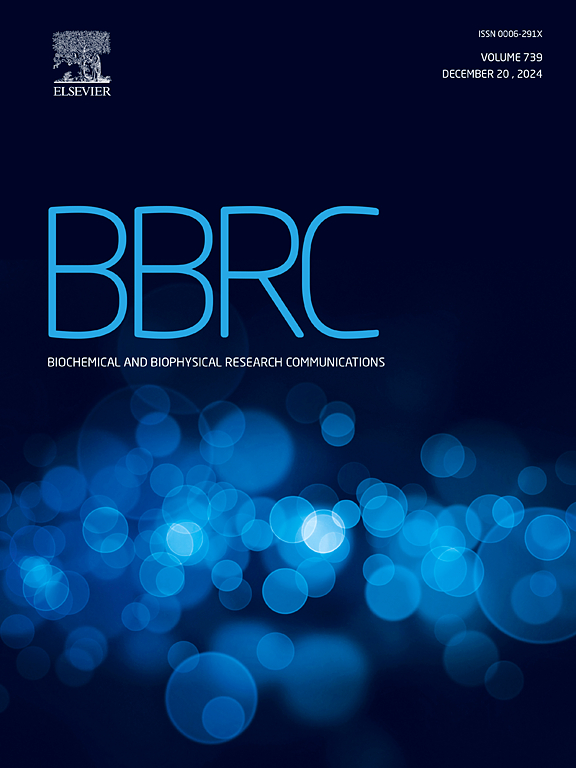Itaconate drives pro-inflammatory responses through proteasomal degradation of GLO1
IF 2.5
3区 生物学
Q3 BIOCHEMISTRY & MOLECULAR BIOLOGY
Biochemical and biophysical research communications
Pub Date : 2025-02-02
DOI:10.1016/j.bbrc.2025.151292
引用次数: 0
Abstract
Itaconate is a small-molecule metabolite generated by the enzyme aconitate decarboxylase 1 (ACOD1), which is upregulated during inflammation. Traditionally, itaconate has been recognized for its anti-inflammatory properties; however, this study reveals a pro-inflammatory mechanism of itaconate in macrophages. We demonstrate that itaconate promotes the proteasomal degradation of glyoxalase 1 (GLO1) via Cys139. GLO1 is crucial for detoxifying methylglyoxal (MGO), a glycolysis byproduct that leads to advanced glycation end-products (AGEs). Elevated concentrations of itaconate correlate with reduced GLO1 expression in peripheral blood mononuclear cells (PBMCs) from patients with sepsis, linking increased itaconate concentrations to heightened MGO and AGE production. Functionally, itaconate-induced degradation of GLO1 promotes the accumulation of MGO and AGEs, thereby exacerbating inflammatory responses. In vivo, itaconate-treated myeloid-specific Ager conditional knockout mice exhibited reduced inflammation and improved survival in experimental sepsis models compared to wild-type controls. Collectively, these findings reveal a novel function of itaconate in immunometabolism, shedding light on its complex involvement in lethal infections.
衣康酸通过蛋白酶体降解GLO1驱动促炎反应。
衣康酸是一种小分子代谢物,由乌头酸脱羧酶1 (ACOD1)产生,在炎症过程中上调。传统上,衣康酸被认为具有抗炎特性;然而,本研究揭示了衣康酸在巨噬细胞中的促炎机制。我们证明衣康酸通过Cys139促进乙二醛酶1 (GLO1)的蛋白酶体降解。GLO1对甲基乙二醛(MGO)解毒至关重要,甲基乙二醛是糖酵解的副产物,可导致晚期糖基化终产物(AGEs)。衣康酸浓度升高与脓毒症患者外周血单个核细胞(PBMCs) GLO1表达降低相关,衣康酸浓度升高与MGO和AGE生成升高有关。功能上,itaconate诱导的GLO1降解促进了MGO和AGEs的积累,从而加剧了炎症反应。在体内,与野生型对照相比,经itaconate处理的骨髓特异性Ager条件敲除小鼠在实验败血症模型中表现出炎症减轻和生存率提高。总的来说,这些发现揭示了衣康酸在免疫代谢中的新功能,揭示了它在致命感染中的复杂参与。
本文章由计算机程序翻译,如有差异,请以英文原文为准。
求助全文
约1分钟内获得全文
求助全文
来源期刊
CiteScore
6.10
自引率
0.00%
发文量
1400
审稿时长
14 days
期刊介绍:
Biochemical and Biophysical Research Communications is the premier international journal devoted to the very rapid dissemination of timely and significant experimental results in diverse fields of biological research. The development of the "Breakthroughs and Views" section brings the minireview format to the journal, and issues often contain collections of special interest manuscripts. BBRC is published weekly (52 issues/year).Research Areas now include: Biochemistry; biophysics; cell biology; developmental biology; immunology
; molecular biology; neurobiology; plant biology and proteomics

 求助内容:
求助内容: 应助结果提醒方式:
应助结果提醒方式:


